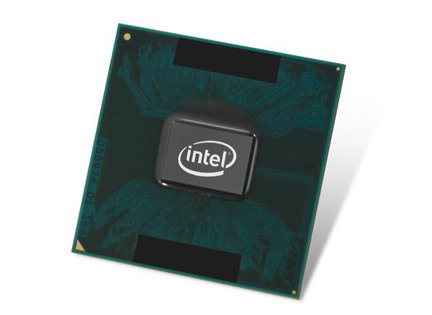Inside Intel's Centrino 2

Intel's next generation of portable platforms — codenamed Montevina but officially christened Centrino 2 — was initially scheduled to appear in the first half of 2008. However, delays due to wireless certification and integrated graphics chip issues delayed the launch until this week — and even then, some elements of the platform, including WiMAX, won't be delivered until later this year.
The story is one of incremental enhancements and fine-tuning, with no breakthrough technologies unveiled. But graphics, wireless, power consumption and performance are all improved, even if the real value of these changes will show not so much in the specifications as in user experience. There should be a lot of that: Intel says that some 250 Centrino 2 products are ready for launch.
The count of Montevina
At the heart of the platform is the 45nm Core 2 Duo processor series, all based on the x86 design previously known as Penryn. It's been beefed up with a 1,066MHz memory or frontside bus (FSB) and is available in a range of variants with up to 6MB of Level 2 cache. There are five new Core 2 Duos: the P8400, P8600, P9500, T9400 and T9600, clocking in at 2.26GHz, 2.40GHz, 2.53GHz, 2.53GHz and 2.80GHz. The P8400 and P8600 have 3MB of L2 cache, while the rest sport the full 6MB. P variants have a 25-watt power envelope and T processors operate within 35W. All of these are standard-voltage parts, leaving room on the spec sheet for low and ultra-low voltage variants later in the year.

Intel has introduced six new 45nm mobile processors: five Core 2 Duos with either a 25W (P series) or 35W (T series) power envelope or Thermal Design Power (TDP), plus a high-performance Core 2 Extreme chip with a 44W TDP.
In addition, the T9400 processor has been validated to work with the 5100 Memory Controller Hub chipset, a combination aimed at high-performance, low-power server and embedded applications such as blades, routers, VoIP switches, firewalls and security appliances.
There's one top-performing part under Intel's premium brand: the Core 2 Extreme X9100. This runs at 3.06GHz and has a power envelope of 44W. Expect a quad-core variant, the X9300, later this year.
Intel says that one of the major improvements to the processors is setting them to switch into sleep mode faster and more often — something the company calls HUGI (Hurry Up And Get Idle). For example, Intel has claimed that the 2.8GHz processor can complete a single task 30 seconds faster than its 2.33GHz predecessor, consuming 60 percent less power in the process. However, we have no details on the task involved — HUGI clearly bears further examination.
The full Montevina
The Mobile Intel GM45 Express chipset supports the 1066MHz FSB and all that, while working closely with the Core 2 Duo processor on power-saving modes. The most prominent upgrade is the inclusion of a new graphics core, the GMA 4500MHD, which runs at up to 533MHz, has extra processing units over previous embedded adapters and has, Intel promises, 1.7 times better 3DMark performance. It also includes a mode to switch over to an external graphics chip when power is available and performance is a priority. Intel also says that the chipset has Blu-Ray video decode acceleration, making it possible to watch a two-hour movie on one battery charge, more efficient transcoding for conversion of content formats, as well as a dual-channel memory controller supporting DDR2 and DDR3.
The GM45 Express chipset features a 1,066MHz frontside bus, an improved graphics engine and, with the 9M Enhanced I/O Controller Hub, support for AMT 4.0.
Although Intel is introducing a new wireless module series, the WiFi Link 5000, this doesn't yet include WiMAX. Instead, the module (codenamed Shirley Peak) includes all 2.4GHz and 5GHz 802.11 standards, including 802.11n with various levels of MIMO — the multiple antenna technology that can improve throughput.
The WiFi Link 5000 series is Intel's second-generation 802.11n solution. Adapters come in PCIe MiniCard (above left) and Half MiniCard (above right) formats, and include MIMO support for faster throughput.
Intel claims that the WiFi Link 5100, with two antennas for reception and one for transmission, has a top speed on paper of 300Mbps reception from base stations, while the WiFi Link 5300, with a three receive/three transmit array, will theoretically peak at 450Mbps in both directions. Actual speeds achievable will fall short of these numbers for various reasons, not least because it's hard or impossible to design MIMO antenna arrays with optimal geometries within the limitations of a notebook form factor. They need a certain amount of space between them.
The wireless adapter variant with WiMAX, Echo Peak, will also come in two versions (the 5350 and 5150) and is now expected later in the year.
You may also see some Centrino 2 notebooks certified as vPro compliant. These will have Intel's 82567LM Gigabit Network Connection and a WiFi Link 5000-series adapter, both of which support AMT 4.0, the remote out-of-band management standard (Active Management Technology) that's being promoted for enterprise use. With a wired or wireless connection, the computer can be in any state from full power to switched off, and as long as power is available from the mains it can be remotely woken up and managed. AMT also works on battery power when the system is on, but is disabled when it's in standby, hibernating or off, as this would drain too much battery power.
Montevina's revenge
The delays and somewhat piecemeal roll-out of Centrino 2's full range of options and feature set may annoy Intel's vendors and give some hope to AMD and its competing Puma platform. For most users, though, this week marks another useful step on the long march towards notebooks that run all the software they want for all the hours they need.